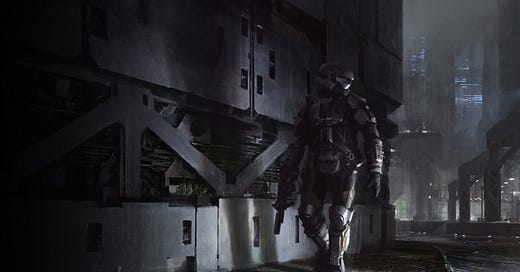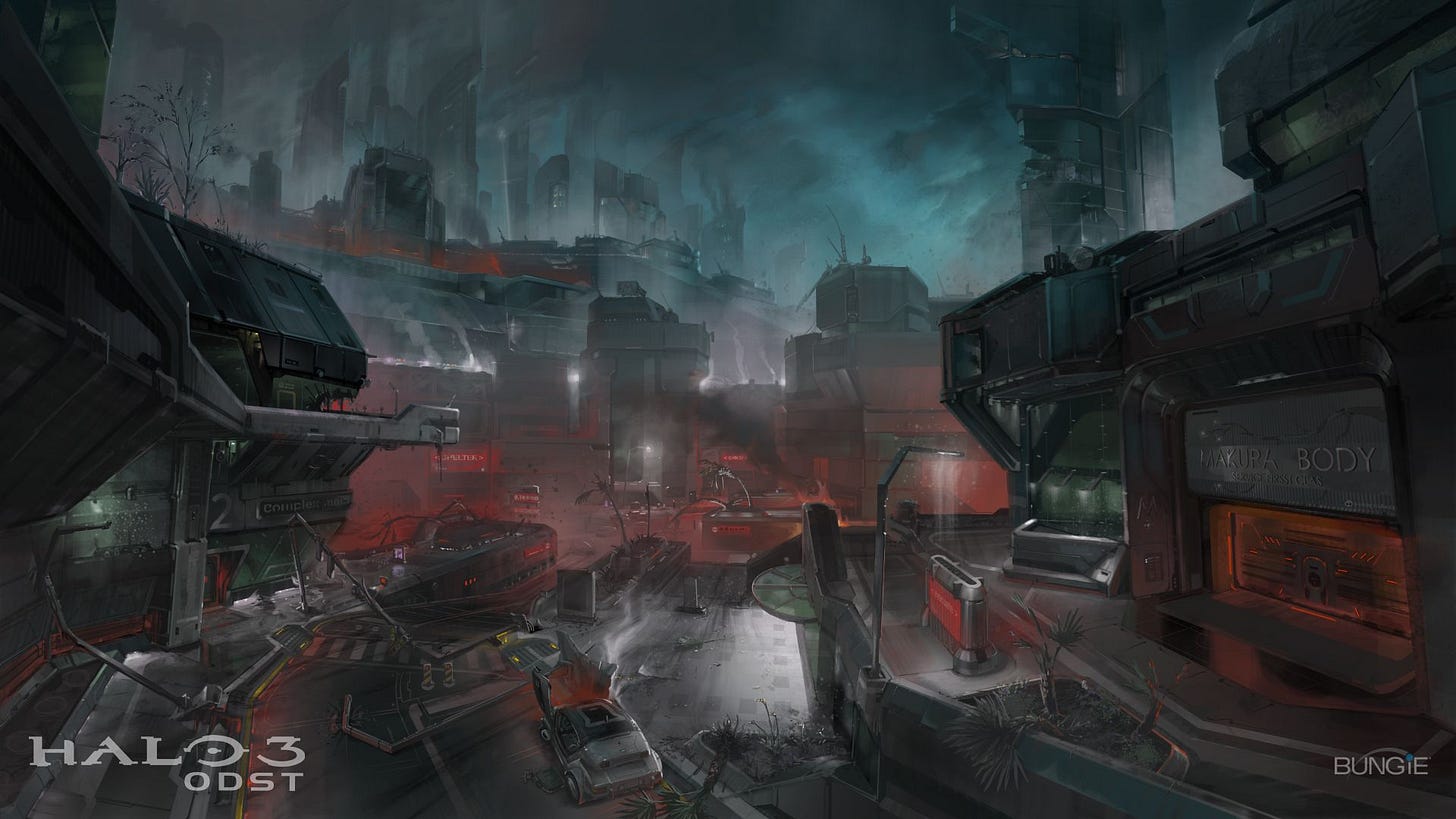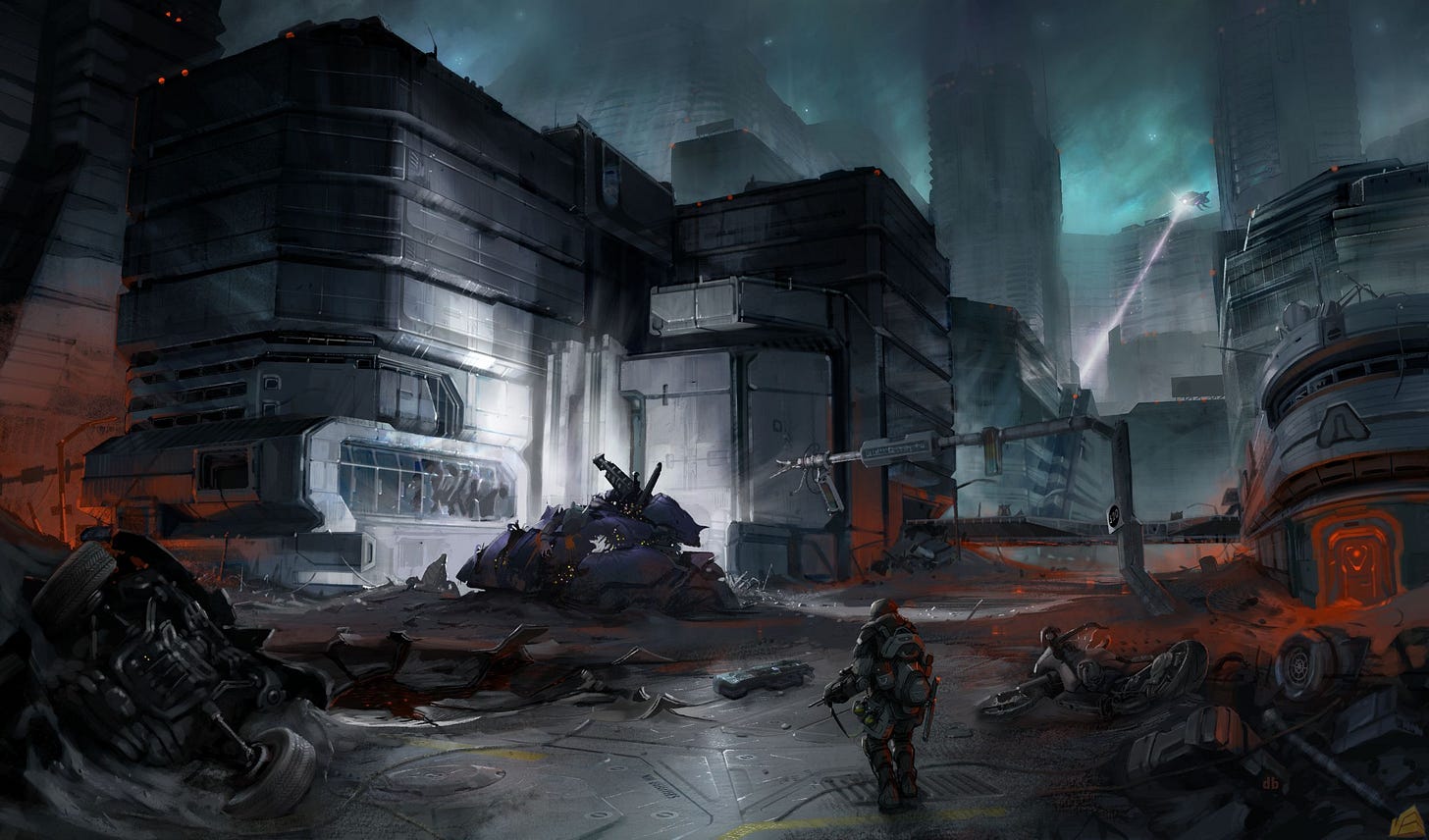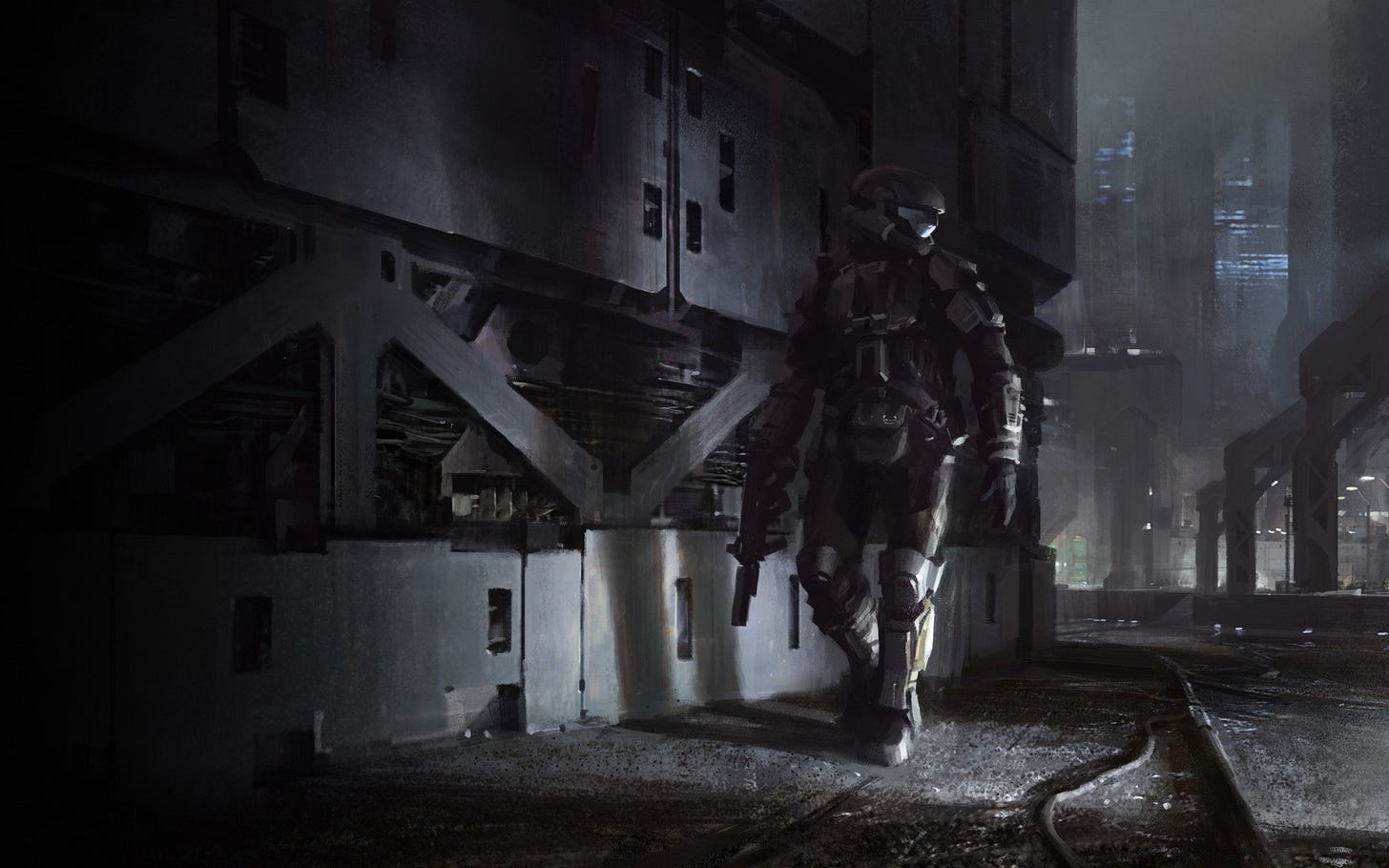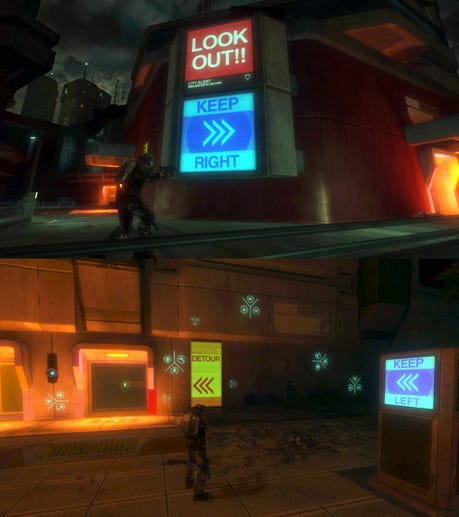The five Halo games Bungie released between 2001 and 2010 are beloved by many. The games are all fantastic for many reasons, be it their level design, world-building, AI, storytelling, art direction or multiplayer. Many would probably name the original trilogy of games as their favourite if they had to choose.
Released in September 2009, Halo 3 ODST follows the UNSC’s Orbital Drop Shock Troopers as they drop into New Mombasa in order to infiltrate the Covenant Assault Class cruiser which is spearheading the invasion of Earth. As seen in Halo 2, the cruiser performs a slip-space jump, detonating an EMP that causes the ODST drop pods to malfunction and crash land in the city. Waking up as ‘The Rookie’ in his orbital drop pod six hours after their initial drop, what follows next is for me the best Halo experience to date, and Bungie’s magnum opus.
Level Design
New Mombasa acts as a mini hub world, never before seen in Halo, and it’s up to the player to explore the city, finding hidden clues that will cause flashbacks. These flashbacks transfer the player into the shoes of the other squad mates, with their missions acting like more traditional halo missions to break up the quieter exploration of New Mombasa. These missions are great, but simply act as more traditional Halo missions to break the established ODST mould. They are episodic in nature so they can be played in any order the player wishes and effectively up the Rookie’s exploration nicely, but what truly makes Halo 3 ODST Bungie’s masterpiece is New Mombasa and its art direction.
New Mombasa’s immersive gameplay
The core gameplay does not divert from the Halo formula, with the golden trio of guns, grenades and melee being the focal point again. What sets ODST aside however is the playable character, the behaviour of the enemy AI and the choice given to the player. Covenant forces will patrol certain areas of the city, blocking the Rookie from reaching his goals. As such, the game offers the player the chance to avoid combat completely, given the knowledge that the ODST’s, whilst special forces, are not the Spartan super soldiers of the previous three games. Tracking the patrol patterns of the enemies is slow, but deliberate because if played on the higher difficulties, you will most likely get killed very quickly if you charge head on into the enemies. Most of the time, it’s far better to avoid combat completely as the Rookie. The player takes increased fall damage, has no shields/regenerative health, throws equipment shorter distances, and their melee damage is reduced. The enemy AI is also extremely flexible. If a player does decide to clear a section of enemies, then it’s up in the air whether or not that area will be safe if you return later. The Covenant will have either replaced the lost forces, or the area will still be in the same state as the player left it. You never know until you travel there, unless you see a Phantom actually deploy additional troops. This makes traversing the city a challenge because no area is ever safe, even if previously thought so.
Art Design
Inspired by his love of 1940’s noir detective films, lead writer Joe Staten wanted to tell a more human, grounded story with ODST. Despite its decaying nature due to the Covenant invasion, New Mombasa comes alive at night. Six hours after the drop, the Rookie awakes at night, having dropped into the city. His only objective is to unravel the mystery of what happened to his team-mates. The atmosphere is unnerving, the falling of the soft rain clashes against the cautious, sodden footsteps of the player traversing the city. Distant sounds of Covenant chatter interspersed with fly by’s of enemy Phantoms, their searchlights making sure the player always on edge, alone and outgunned. The neo-noir tone of the game is evident everywhere. The dark skyboxes are interrupted by the amber orange glow of the fire and smoke from the burning skyline, and the damp, abandoned streets are contrasted against the bright neon signs of the metropolis. Police cars with their red and blue sirens wail in the distance, and the roadblocks are in a seemingly malfunctioning state. The only friendly voice that accompanies the Rookie is the static, robotic Superintendent Vergil, the AI responsible for running all aspects of the city. What the player will grow to learn if they pay attention whilst looking around New Mombasa is that Vergil is essentially guiding the player to their destination the whole time. Subconsciously, the player will grow to notice bright arrows, or signs designed for traffic such as ‘detour’ or ‘keep right’. It’s a credit to the game that players will only realise this near the end of their journey through the city. On the whole, Bungie ripped up their own textbook, and designed something special with New Mombasa. It is haunting, soaked, isolated, frightening, and ever changing.
To accompany the sound design, Marty O’ Donnell and Michael Salvatori return once more to provide the score, and for me, manage to exceed the immense standards that they set themselves previously. O’ Donnell was initially hesitant to come back for a project such as this, but once he saw early concept art, he immediately agreed to make the soundtrack. Electing instead to have a quieter, jazz infused motif in order to match the tone of the game, soft saxophones and piano notes accompany the Rookie through the streets. It’s an incredible achievement on O’ Donnell and Salvatori’s behalf to create something that is so attuned to the games tone, in light of their previous work. It’s hard to explain, so really it’s better if you just take the time to listen, with Overture, Deference for Darkness and Neon Nights being highlights in my opinion.
Sadie’s Story and Dante’s Inferno
I won’t go into too much detail on this area, as there is a wonderful YouTube video that dives into this aspect of the design, but I will briefly highlight the clear references to Dante Algieri’s Inferno, one of my favourite works. Firstly, and most obviously, the Rookie is guided by the cities Superintendent who is called Vergil, a nod to the same Virgil who guides Dante through Hell. ODST’s are known in-universe as ‘Helljumpers’, who jump feet first into New Mombasa, described as ‘Hell on Earth’ by some in-game graffiti. The 30 audio logs that tell Sadie’s Story are split into 9 circles, which is the same number of rings in Dante’s Hell. Sadie’s story progresses through nine themes in the same order as the nine circles of Hell in Dante's Inferno. For example, the corrupt police chief Kinsler attempts to rape Sadie as told in the audio logs titled ‘Circle 2’. The second circle of Dante’s Inferno is Lust. Later in her story, in circle 8 of the audio logs, Sadie visits a radio station that is broadcasting false propaganda to raise morale to the citizens of New Mombasa. Circle eight in Dante’s Inferno is Fraud. As someone who loves both Halo and Dante’s Inferno, and who likes to think they have a good knowledge of both, the fact that it took me multiple playthroughs and that YouTube video to notice the links is a testament to Bungie’s subtly.
Conclusion
To conclude, Halo 3 ODST to me is Bungie’s masterpiece. They took a huge risk with the direction and tone they chose for the game, but it pays off tenfold. A drastic departure from the established setting and gameplay from the previous games, Halo 3 ODST’s atmosphere and immersion sets it apart in the franchise. The neo-noir theme of the plot, the dangerous isolation of New Mombasa, and the sound design alongside the soundtrack is Bungie at their very best. Sadie’s story is also masterfully told as a meta story to parallel the exploration of the Rookie. It’s an experience best spent alone, in a dark room with a good set of headphones. Whilst that sounds cliche, you won’t forget your trip through the rain covered streets of New Mombasa.

